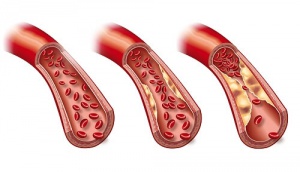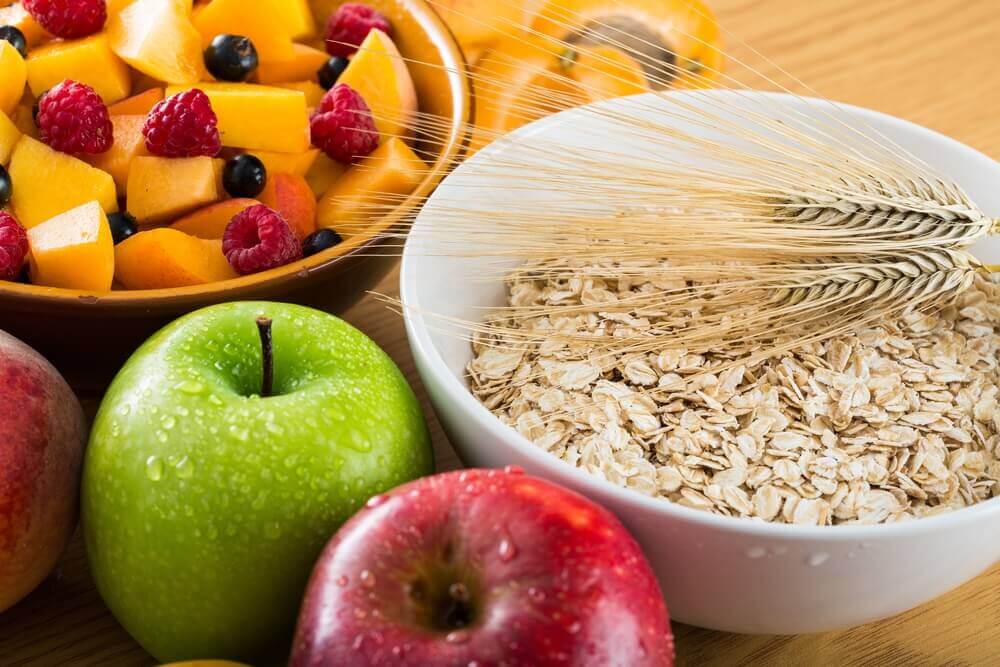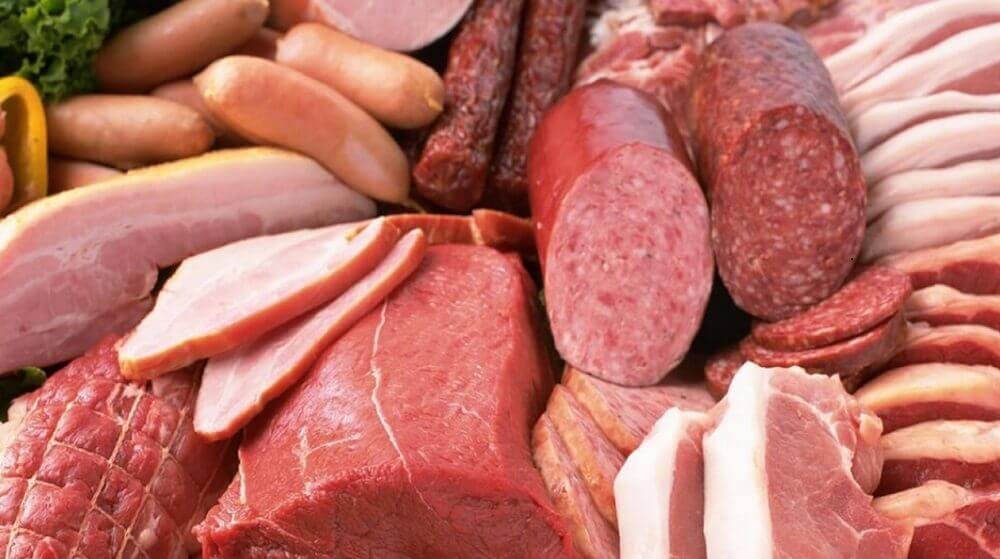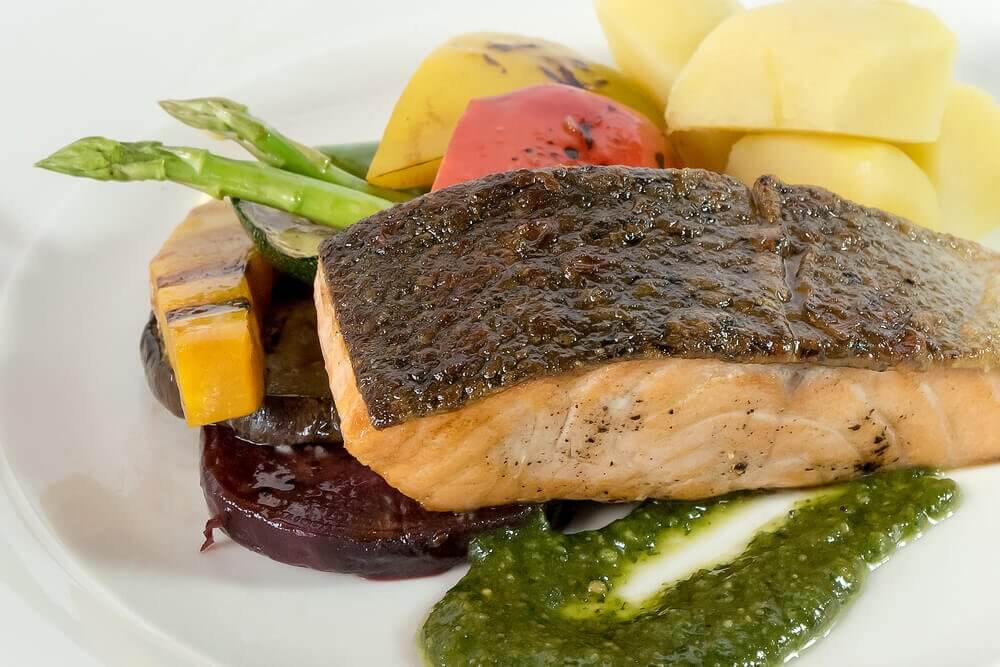A Weekly Diet to Lower Triglycerides


Reviewed and approved by the pedagogue in physical education and nutritionist Elisa Morales Lupayante
Planning a healthy diet is an essential to lower triglycerides. Your body uses this lipid as a source of energy. It tends to build up in your arteries, increasing your risk of suffering from serious cardiovascular diseases.
This disorder is known in medical terms as hypertriglyceridemia. It usually occurs due to problems your body might suffer from. Some of these are being overweight, obesity, alcohol use and Type II diabetes.
It’s not a direct cause, but a diet rich in fat and calories can cause complications for this condition. Therefore, in addition to medical treatments, you need to improve your eating habits and control them.
In this article, we’ll give you a weekly diet model. This will help to lower your triglycerides naturally and safely thanks to its combination of different foods.
Don’t hesitate to give it a try!
A Healthy Diet to Lower Triglycerides: Important Aspects
Triglycerides are the most important type of lipid in your bloodstream. Your body produces it from the fatty acids in food. Later, hormones release it in the blood to use as an energy source.
However, just like cholesterol, too much of it can block your arteries or narrow them. This significantly increases your chances of atherosclerosis, heart disease and stroke.
To control it, you may need to take medications. However, there is also a natural treatment that consists of following a proper, balanced diet.
Also read:
Keys to lower triglycerides with your diet

There are many diet models to lower your triglycerides effectively. Regardless, there are some key tips that everyone should apply:
- Don’t exceed the recommended daily amount of calories. Your body transforms calories into triglycerides. Then, it stores them for later use in your cells.
- Avoid consuming saturated and trans fat.
- Increase your consumption of dietary fiber. This is a nutrient that helps regulate the amount of lipids in your blood.
- Avoid consuming alcoholic drinks.
- Eliminate sugar and simple carbohydrates.
Foods that help to lower triglycerides
Some foods you can eat to help control your triglycerides are:
- Olive oil
- Vegetables
- Avocados
- Fatty fish
- Oats
- Nuts and seeds
- Leafy green vegetables
- Fruits
- Lean meats
Forbidden foods

Some of the foods that you should eliminate as much as possible are:
- Whole dairy
- Red meats
- Stuffed meats, like sausages
- Mayonnaise and bottled dressings
- Bread and processed pastries
- Packaged food and fast food
- Hydrogenated oils and lard
A weekly diet model to lower triglycerides

This weekly diet helps you reduce your consumption of harmful fats. In turn, this helps control your lipids. It’s a varied and balanced diet. It doesn’t cause side effects because you won’t be restricting food groups.
Also see:
Tip to Increase Good Cholesterol
Monday
- Breakfast: a cup of coffee with skim milk, a slice of toast with tomato and a kiwi
- Mid morning: a cup of tea and a vegetable sandwich
- Lunch: baked artichoke dish, roasted fish, and fruit
- Mid afternoon: a cup of low-fat yogurt
- Dinner: half a plate of grilled asparagus and a portion of chicken breast
Tuesday
- Breakfast: a glass of orange juice and a slice of bread with avocado
- Mid morning: a cup of tea and whatever fruit you’d like
- Lunch: a plate of whole-grain pasta salad and baked hake with vegetables
- Mid afternoon: a slice of toast with a slice of turkey
- Dinner: a bowl of mixed salad with nuts and tuna
Wednesday
- Breakfast: an oatmeal, apple and banana smoothie
- Mid morning: a plate of chopped fruit and oats
- Lunch: rice with vegetables and flounder with baked peppers
- Mid afternoon: a cup of tea and a slice of wholegrain bread with olive oil
- Dinner: a plate of grilled eggplant or vegetable soup
Thursday
- Breakfast: a glass of orange juice, a portion of bread with a slice of turkey and tomato, and a banana
- Mid morning: a cereal bar or fruit salad
- Lunch: a half plate of stir-fried asparagus and a portion of tuna
- Mid afternoon: three tablespoons of oatmeal in milk or water and a slice of turkey
- Dinner: half a plate of sautéed vegetables and baked fish
Friday
- Breakfast: a bowl of cereal without sugar and a glass of skim milk
- Mid morning: a vegetable sandwich and a cup of tea
- Lunch: a pasta dish with shredded chicken and vegetables
- Mid afternoon: low-fat yogurt with ground nuts
- Dinner: half a plate of sautéed mushrooms and ham
Saturday
- Breakfast: toast with olive oil and tomato, and a cup of tea
- Mid morning: a handful of nuts or bread with avocado
- Lunch: a portion of beef fillet and baked potatoes
- Mid afternoon: a piece of fruit or natural yogur
- Dinner: a lemon fish fillet and a portion of salad or brown rice.
Sunday
- Free menu or healthy ingredients. You can repeat one of the menus from the week.
Did your triglyceride test not show the best results? Don’t hesitate to try this delicious weekly menu to bring them back to normal levels.
All cited sources were thoroughly reviewed by our team to ensure their quality, reliability, currency, and validity. The bibliography of this article was considered reliable and of academic or scientific accuracy.
-
Briggs, M. A., Petersen, K. S., & Kris-Etherton, P. M. (2017). Saturated Fatty Acids and Cardiovascular Disease: Replacements for Saturated Fat to Reduce Cardiovascular Risk. Healthcare (Basel, Switzerland), 5(2), 29. https://www.ncbi.nlm.nih.gov/pmc/articles/PMC5492032/
- Cambridge University Hospitals. Dietary advice for management of high triglycerides. Natinal Health Service (NHS). https://www.cuh.nhs.uk/patient-information/dietary-advice-for-management-of-high-triglycerides/
- Clínica Mayo. (2022). Triglicéridos: ¿por qué son importantes? https://www.mayoclinic.org/es-es/diseases-conditions/high-blood-cholesterol/in-depth/triglycerides/art-20048186
-
Ghobadi, S., Hassanzadeh-Rostami, Z., Mohammadian, F., Nikfetrat, A., Ghasemifard, N., Raeisi Dehkordi, H., & Faghih, S. (2019). Comparison of blood lipid-lowering effects of olive oil and other plant oils: A systematic review and meta-analysis of 27 randomized placebo-controlled clinical trials. Critical reviews in food science and nutrition, 59(13), 2110–2124. https://pubmed.ncbi.nlm.nih.gov/29420053/
-
Guasch-Ferré, M., Tessier, A. J., Petersen, K. S., Sapp, P. A., Tapsell, L. C., Salas-Salvadó, J., Ros, E., & Kris-Etherton, P. M. (2023). Effects of Nut Consumption on Blood Lipids and Lipoproteins: A Comprehensive Literature Update. Nutrients, 15(3), 596. https://www.ncbi.nlm.nih.gov/pmc/articles/PMC9920334/
-
Gupta, R., Abraham, R. A., Kondal, D., Dhatwalia, S., Jeemon, P., Reddy, K. S., Prabhakaran, D., & Ramakrishnan, L. (2019). Association of trans fatty acids with lipids and other cardiovascular risk factors in an Indian industrial population. BMC research notes, 12(1), 342. https://www.ncbi.nlm.nih.gov/pmc/articles/PMC6580624/
- Harvard Health. (2021, 14 diciembre). Ask the Doctor: Are eggs risky for heart health? https://www.health.harvard.edu/heart-health/are-eggs-risky-for-heart-health
- Karanchi, H. (2023, 12 febrero). Hypertriglyceridemia. StatPearls – NCBI Bookshelf. https://www.ncbi.nlm.nih.gov/books/NBK459368/
-
Kim, S. A., & Shin, S. (2021). Red meat and processed meat consumption and the risk of dyslipidemia in Korean adults: A prospective cohort study based on the Health Examinees (HEXA) study. Nutrition, metabolism, and cardiovascular diseases : NMCD, 31(6), 1714–1727. https://pubmed.ncbi.nlm.nih.gov/33992510/
-
Klop, B., do Rego, A. T., & Cabezas, M. C. (2013). Alcohol and plasma triglycerides. Current opinion in lipidology, 24(4), 321–326.https://pubmed.ncbi.nlm.nih.gov/23511381/
-
Leaf, D. A., & Hatcher, L. (2009). The effect of lean fish consumption on triglyceride levels. The Physician and sportsmedicine, 37(1), 37–43. https://pubmed.ncbi.nlm.nih.gov/20048486/
-
Liu, J., Li, Y., Wang, X., Gao, D., Chen, L., Chen, M., Ma, T., Ma, Q., Ma, Y., Zhang, Y., Jiang, J., Zou, Z., Wang, X., Dong, Y., & Ma, J. (2021). Association between Fruit Consumption and Lipid Profile among Children and Adolescents: A National Cross-Sectional Study in China. Nutrients, 14(1), 63. https://www.ncbi.nlm.nih.gov/pmc/articles/PMC8746805/
-
Luna-Castillo, K. P., Olivares-Ochoa, X. C., Hernández-Ruiz, R. G., Llamas-Covarrubias, I. M., Rodríguez-Reyes, S. C., Betancourt-Núñez, A., Vizmanos, B., Martínez-López, E., Muñoz-Valle, J. F., Márquez-Sandoval, F., & López-Quintero, A. (2022). The Effect of Dietary Interventions on Hypertriglyceridemia: From Public Health to Molecular Nutrition Evidence. Nutrients, 14(5), 1104. https://www.ncbi.nlm.nih.gov/pmc/articles/PMC8912493/
- Medline Plus. Triglicéridos. Biblioteca Nacional de Medicina de Estados Unidos. https://medlineplus.gov/spanish/triglycerides.html
-
Merino, J., Mateo-Gallego, R., Plana, N., Bea, A. M., Ascaso, J., Lahoz, C., Aranda, J. L., & Hypertriglyceridemic Registry of Spanish Arteriosclerosis Society (2013). Low-fat dairy products consumption is associated with lower triglyceride concentrations in a Spanish hypertriglyceridemic cohort. Nutricion hospitalaria, 28(3), 927–933. https://pubmed.ncbi.nlm.nih.gov/23848121/
- Pérez-Martínez, P., & Pérez-Jiménez, F. (2021). Tratamiento de la hipertrigliceridemia leve-moderada. Clínica e Investigación en Arteriosclerosis. 33 (S2): 69-74. https://www.elsevier.es/es-revista-clinica-e-investigacion-arteriosclerosis-15-articulo-tratamiento-hipertrigliceridemia-leve-moderada-S0214916821000152
-
Polak, R., Phillips, E. M., & Campbell, A. (2015). Legumes: Health Benefits and Culinary Approaches to Increase Intake. Clinical diabetes : a publication of the American Diabetes Association, 33(4), 198–205. https://www.ncbi.nlm.nih.gov/pmc/articles/PMC4608274/
-
Tani, S., Imatake, K., Suzuki, Y., Yagi, T., Takahashi, A., Matsumoto, N., & Okumura, Y. (2022). Combined Higher Frequency Fish Consumption and Healthy Lifestyle May Lower the Triglyceride/HDL-C Ratio in Middle-Aged Japanese Males: Anti-Atherosclerotic Effect of Fish Consumption. Annals of nutrition & metabolism, 78(3), 166–176. https://pubmed.ncbi.nlm.nih.gov/34915471/
- Triglycerides Test. (s. f.). https://medlineplus.gov/lab-tests/triglycerides-test/
-
Welty F. K. (2020). Dietary treatment to lower cholesterol and triglyceride and reduce cardiovascular risk. Current opinion in lipidology, 31(4), 206–231. https://pubmed.ncbi.nlm.nih.gov/32692035/
- Whole Grains. (2019, 4 noviembre). The Nutrition Source. Harvard T.H. Chan School of Public Health. https://www.hsph.harvard.edu/nutritionsource/what-should-you-eat/whole-grains/
This text is provided for informational purposes only and does not replace consultation with a professional. If in doubt, consult your specialist.








